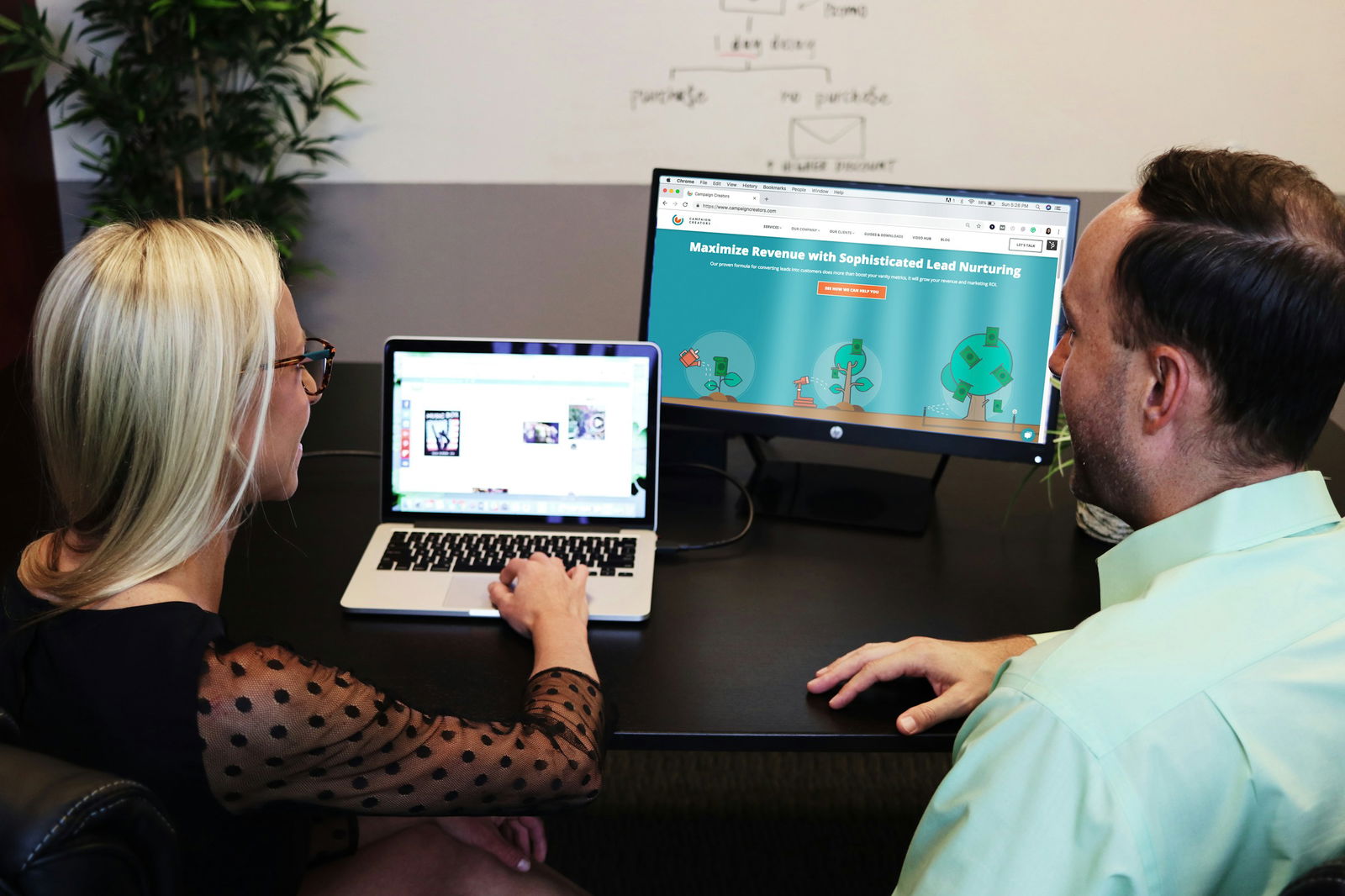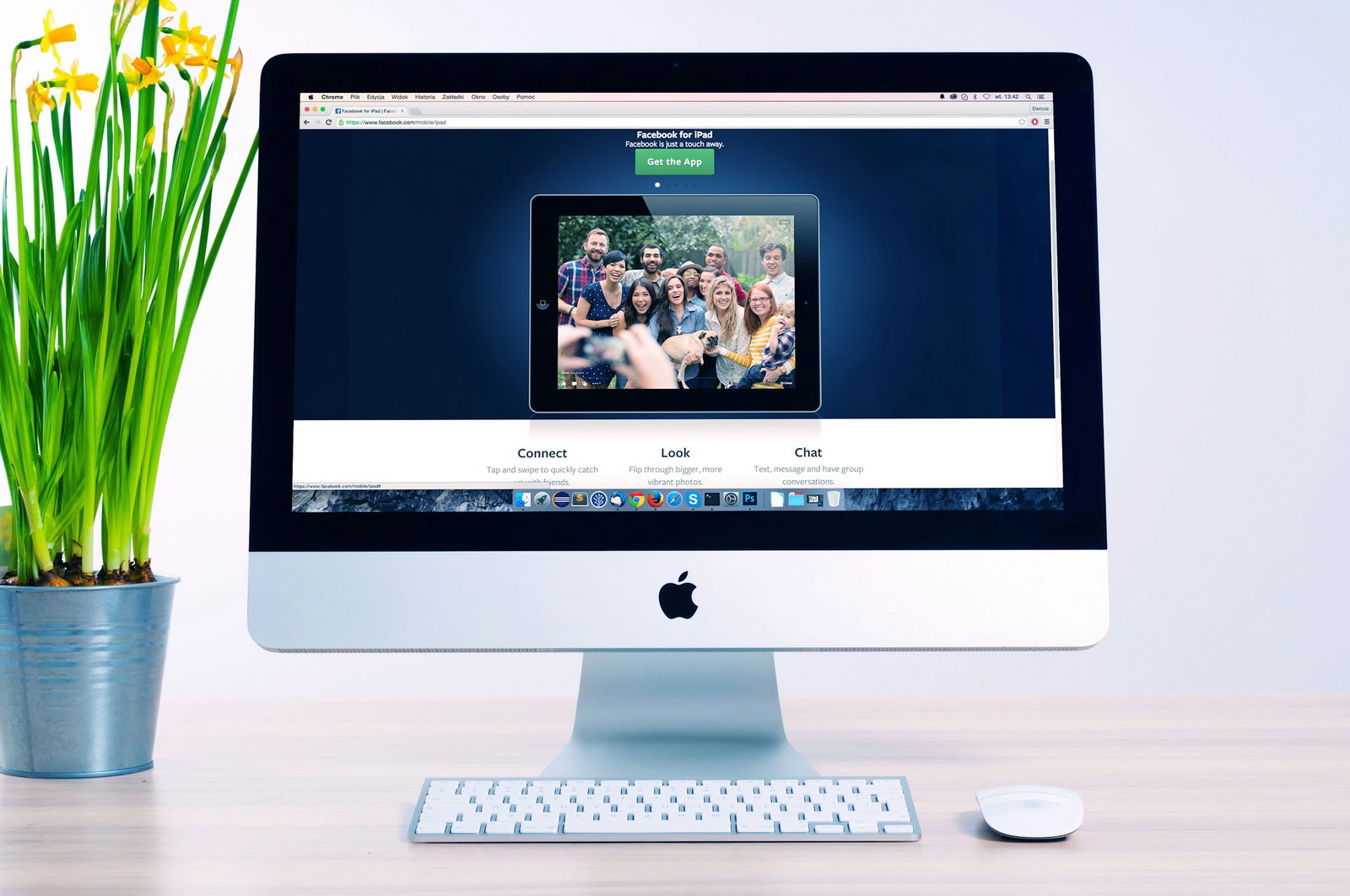Have you stumbled on structuring your landing page sections to drive conversions? Whether launching a new product, offering a service, or looking to capture leads, the sections on your landing page can make or break your campaign. Even the most beautifully designed landing page can only succeed if the sections are in order or flow logically. You're in the right place if you're looking for landing page examples and wondering what sections to include on a high-converting landing page.
Looking for a way to seamlessly structure your landing page sections for maximum impact without starting from scratch? Magic UI's startup landing page template is the solution you've been looking for.
What is A Landing Page?

A landing page is a web page designed to coax visitors toward a specific action. It usually attracts traffic drawn from search engines, email marketing, or social media campaigns. Visitors typically approach a landing page in two parts.
- The content at the top of the page sparks interest, concisely communicating the benefits or offers, and provides a call-to-action (CTA). This content typically fits on the screen above the fold, meaning no scrolling is required to read it.
- As visitors scroll down, they can access detailed information, such as product features and social proof, to support their decision-making.
Benefits of Landing Pages

When tailored to the audience and purpose of a specific campaign, landing pages increase the chances of capturing the attention of the target audience. They play a critical role in converting visitors into leads or customers. These pages provide an opportunity for re-engagement. Users can establish a long-lasting relationship with the brand by making a positive impression on users and encouraging them to subscribe and eventually purchase more.
Landing pages offer a direct entry into the marketing funnel. The email addresses and other user information obtained from the landing page can be used to establish a profitable relationship with these customers.
Empowering Design with MagicUI
MagicUI is a free and open-source UI library that we designed specifically for design engineers. It offers a collection of over 20 animated components built with React, TypeScript, Tailwind CSS, and Framer Motion. We provide a range of visually appealing and interactive elements that can be easily integrated into web applications, allowing us to create stunning user interfaces with minimal effort.
MagicUI components are highly customizable, enabling seamless adaptation to match our desired branding and design requirements. With our focus on animation and a design-centric approach, MagicUI aims to bridge the gap between design and development, empowering us to craft captivating digital experiences. Along with our free component library, with MagicUI Pro, you can save thousands of hours creating a beautiful landing page and converting your visitors into customers with our website templates.
Use our startup landing page template today!
Related Reading
- FAQ Template
- How To Create A Landing Page
- Website Footer
- Website Header Examples
- How To Design A Landing Page
- Creative Landing Page Design
- Pricing Page Examples
- Tailwind Landing Page
- Landing Page UI
- Landing Page Copywriting
- App Landing Page
Types of Landing Pages

- Lead capture landing page
- PPC (Pay-PerClick) landing page
- Product landing [age
Lead Capture Landing Page
Lead capture landing pages are designed to gather visitor information, such as names and email addresses, in exchange for:
- Valuable content or offers like eBooks
- Whitepapers
- Webinars
The primary objective is to build an email list and nurture leads for future marketing efforts. These landing pages typically feature a headline that communicates the offer's value proposition, a form to collect visitor information, and a compelling CTA button encouraging visitors to submit their details.
PPC (Pay-Per-Click) Landing Page
PPC Landing Pages are explicitly created for paid advertising campaigns (e.g., Google Ads or Facebook Ads) and aim to maximize the conversion rate by providing a seamless and relevant experience for visitors who click on the ad.
These pages are optimized to match the ad's messaging, with a headline and copy that align closely with the ad content. They include a prominent CTA button that mirrors the ad's call-to-action and are designed to minimize distractions to keep visitors focused on converting.
Product Landing Page
Product Landing Pages showcase and promote a specific product or service to drive conversions and sales. They highlight the product’s key features, benefits, and value propositions to persuade visitors to purchase or take another desired action. These pages typically include:
- Captivating headline
- High-quality product images or videos
- Detailed product descriptions
- Customer testimonials or reviews
- Pricing information
- Clear CTA button
13 Essential Landing Page Sections: Anatomy Of A High-Converting Landing Page

1. Attention Grabbing Hero Section
Many of your customers will access your landing page using their mobile devices, and the first thing they will see is the above-the-fold or hero section of your page.
You must be able to convey your USP (unique selling proposition) in that section of your page and convince them to keep scrolling. The above-the-fold section includes multiple components that persuade the site visitor to consider your offer. Elements will be found in the hero section like:
- Logo
- Headline
- Supporting headline
- Hero image
- CTA button or form
Hero section features to consider:
A Compelling Headline
Your landing page headline must grab visitors' attention and communicate what your company offers using as few words as possible. You will also ideally insert keywords here for SEO purposes.
An Easily Digestible Supporting Message
The supporting headline follows the main headline and aims to persuade the site visitor to take the desired step. It is usually written in a smaller font than the main headline.
A Hero Image
Your hero shot can be a high-quality image or video that helps the site visitor visualize your product or offer. It must make the customer empathize with the emotion and message you are trying to convey in your web copy.
CTA Button
The CTA is one of the most important elements in the hero section of your landing page, and all the other elements build towards it. Your landing page will have fulfilled its purpose once the site visitor clicks on it and completes the desired action.
2. Unique Value Proposition
A compelling, unique value proposition addresses the visitor’s question, "Why should I choose your product or service over others?" This part of the landing page is your chance to display your product in action and how the features create a solution for your target customer. To accomplish this outcome, highlight unique features or solutions, address customer pain points and fears, and emphasize what sets your offer apart.
When it comes to formatting your unique value proposition on a landing page, you can take a few different routes:
- Bullet points
- Graphics/infographics
- Statistics
- Testimonials/reviews
- Product demos, screenshots, or gifs
3. Persuasive and Benefit Driven Copy
Once you get the site visitor to scroll past the hero section, you must drive your message home with the rest of your text. Your body copy must effectively describe the features and benefits of your product or offer clearly and concisely.
Each sentence needs to convince the visitor that your product or service is exactly what they need and answer any questions they may have. Outsourcing service provider SupportNinja's landing page is an excellent example of a well-planned page content layout.
Considerations with body copy:
Numbered List or Features List
Your site visitors will find scanning through bullet points and numbered lists easier than text-heavy content. A list forces you to break down your content into concise, simple benefits.
Use Subheadlines
Breaking down your landing page into sections using subheadlines is a great way to enhance the readability of your content and help visitors "scan" your page for the content that interests them.
4. Call to Action
A well-crafted CTA guides visitors toward the desired conversion goal — and is, of course, one of the most crucial parts of a landing page. When done correctly, a CTA prompts visitors to take a specific action, such as:
- Signing up
- Making a purchase
- Downloading content
Depending on your goals and organization, you might use one of the following common formats for your CTA(s):
- Button: These clickable elements typically have text that prompts visitors to take action, such as "Sign Up," "Buy Now," or "Learn More." Buttons can vary in size, shape, color, and style, but they should always stand out and be easily clickable.
- Text link: Format these links differently from regular text to make them more noticeable and clickable.
- Form submission: For lead generation landing pages, the CTA may be a form submission field where visitors can enter their information and submit it to access a resource or request more information.
- Popup: CTAs can also appear in popups or modals at the top or bottom of the landing page content. You can use popups for special offers and promotions or to capture email sign-ups.
5. Social Proof
One of the best ways to tell a story on your landing page is to provide evidence of real people who have benefitted from your product. The goal is to:
- Inspire your visitors
- Build credibility
- Create trust
To accomplish this goal, you can include a variety of different types of content, including:
- Customer testimonials: Quotes or reviews from satisfied customers who have had positive experiences with your product or service can be highly persuasive. Testimonials should be authentic, specific, and ideally accompanied by the customer's name, photo, and affiliation (if relevant).
- Case studies: Detailed accounts of successful customer experiences or use cases to demonstrate real-world results and provide evidence of your product or service's effectiveness.
- User ratings and reviews: Display star ratings or numerical scores.
- Customer logos: Showcase recognizable logos or badges of well-known customers, partners, or industry affiliations.
- Social media mentions: Highlight social media mentions, shares, or endorsements from influencers or industry leaders.
- User-generated content (UGC): Share user-generated content, such as photos, videos, or testimonials your customers create related to your product or service.
- Trust badges: Include badges, such as security seals or industry certifications, that prove your website's reliability and authority.
Each piece of content adds credibility to your offer and reassures visitors that others have had positive experiences.
6. Great-looking, Supporting Imagery
Every image on the page should support the surrounding text or provide additional context about your story. If it doesn’t, you don't need it on your landing page. When creating your own landing page, carefully consider how best to convey your offer through imagery.
7. The Team
Okay, so you have a great product, and people understand how it works, but do they know who you are? As we’ve discovered, converting visitors is about creating trust. To solidify that trust, it’s often advantageous to provide insight into the human faces behind your company. This approach helps assuage fears about whether or not visitors can rely on you to support their needs over the long term.
Anyone investing their hard-earned money into a new solution most likely wants to know who they’re getting involved with. While this isn’t always the case, showcasing how awesome your team is may set you apart from the competition.
8. Contact Information
Contact information on a landing page aims to establish trust, offer support, encourage communication, and provide a means for visitors to take the next steps. It makes your business more accessible to visitors, offers transparency, and shows that you are open to communication.
Prioritizing Contact Information for Accessibility and Trust
In some cases, visitors may prefer to contact you directly for more detailed information that may not be addressed on the landing page. Multiple contact methods, such as phone numbers and email addresses, ensure visitors can reach out with queries. In certain regions or industries, providing contact information is a legal requirement. This information should be easily accessible, instilling confidence in the visitor.
Contact information also adds a human touch to your business. It shows that real people are behind the products or services, making the interaction more personal.
9. Doubt-busting FAQs
Provide a Frequently Asked Questions section to make your argument and remove any remaining doubts before any on-the-fence visitors reach the end of the page. The FAQs can demonstrate brand empathy. By listening to your users’ concerns, you can proactively address them while they're making a decision.
10. Minimalist Footer
As with the header, the best landing pages include only essential information and links in the footer. Some comment elements to include are:
- Link to Privacy Policy page
- Link to Terms of Use page
- Brand logo
- Copyright Statement
Anything more than that in your landing page’s footer risks distracting your visitors with other calls to action. Remember, the goal of a landing page is to convert as many users as possible.
11. Pricing
Price is one of the most significant objections new leads will have as they are near the closing stage of the buying cycle. If you are in the SaaS or e-commerce industry, handling those objections up-front will save you a lot of time.
It includes a clear, transparent pricing section that breaks down the specs for visitors who are ready to buy. If you detail exactly what they're paying for, you should be able to converse with them even if they still have a few lingering questions.
12. Interactive Elements
You can use interactive elements like animations, videos, or quizzes to enhance your storytelling. It's all about creating an engaging landing page that provides a fun experience that can boost your chances of convincing the prospective customer to make a purchase.
Interactive landing pages are perfect for complex products that may require a demo to help the site visitor better understand how the product can be used to solve problems in real-life scenarios. For instance, Magic UI's animated components are perfect for tech startups to demonstrate how their products work or integrate with other tech stacks.
13. Forms
Forms usually serve one primary purpose: they aim to convert visitors into leads, which is also the ultimate goal of your landing pages. This is why forms are an integral component of effective landing pages and why you should pay particular attention to creating lead capture forms.
Well-crafted forms optimize the user experience, making it easy, intuitive, and efficient for visitors to complete the form, increasing the likelihood of conversion. An effective form should be user-friendly, which means it should be clear and straightforward.
- You should avoid unnecessary complexity and use simple language.
- Use clear and concise labels for form fields.
- Use placeholder text within fields to guide users on what information to enter.
- Clearly state what information is required and why.
Landing Page Design Best Practices

Clear and Persuasive Copywriting
To create a persuasive landing page, utilize clear and concise language that focuses on benefits rather than features. Address common objections and provide reassurance to alleviate doubts that visitors may have. A well-crafted copy can effectively guide visitors towards the desired action.
Leverage Urgency and Scarcity
Using countdown timers, limited-time offers, or limited availability messages can create a sense of urgency that motivates visitors to act promptly. Urgency and scarcity elements can convey that an offer is time-sensitive or in high demand, compelling visitors to take action quickly.
Get Personal
Personalized content can significantly improve conversion rates. Implement dynamic content or targeted messaging based on visitor demographics, behavior, or preferences. Personalizing content can enhance user experience and drive conversions.
Optimize Performance and Loading Speed
Optimizing landing page performance and loading speed is essential for conversion rates. Page speed is crucial, as faster loading times result in higher conversion rates. Employing techniques to optimize images and reduce loading times can enhance user experience and prevent visitor frustration.
Abide by UX Design Best Principles
Thoughtfully designed landing pages with carefully chosen:
- Visuals
- Interactive elements
- Layouts
- Typography
- Fonts
- Colors
Ensure these elements align with your brand and resonate with your target audience. Following UX design best practices can enhance user engagement.
Prioritize Mobile-Responsive Design
Implement responsive design techniques to accommodate mobile device users. Utilize flexible layouts, scalable images, and touch-friendly navigation to maximize engagement and conversions across all platforms. Prioritizing mobile responsiveness can improve user experience and drive conversions.
Design with Structure in Mind
The structure and layout of a landing page play a significant role in driving conversions. Employ visual hierarchy, whitespace, and directional cues to highlight key elements and reduce distractions. A well-structured landing page can effectively guide visitors towards the desired action.
Experiment with A/B Testing
A/B testing different variations of landing pages can help identify the most effective elements. Testing elements such as headlines, visuals, and CTAs allows you to optimize your landing page for improved conversion rates. A/B testing helps understand visitor preferences and optimize landing pages for performance.
Focus on Responsive Forms
Optimize forms on landing pages for usability and conversion across all devices. Use clear labels, input validation, and error messages to guide visitors through the form submission. Keep forms short and simple by only asking for essential information to reduce friction and improve conversion rates.
Related Reading
- Portfolio Landing Page
- React Portfolio Template
- NextJS Portfolio Template
- React Landing Page
- Startup Landing Page
- Tailwind Portfolio Template
- Best Saas Landing Pages
- React Header
- CTA Design
- Social Proof On Website
- App Landing Page
- Hero Section Design
- Waitlist Landing Page
- Best Web Developer Portfolios
- Nextjs Landing Page
Best Landing Page Design Examples

langfuse.com
Langfuse is a tech startup designed to enhance observability for AI applications, particularly those using large language models (LLMs). It integrates seamlessly with existing AI models to provide detailed insights into their performance, helping developers understand and improve their AI systems.
- Langfuse uses Magic UI to build its landing page.
- The landing page engages with animated components offered by Magic UI, and its clean design maintains a 1:1 attention ratio.
- Once you land on the page, the animated video in the header section and the shimmering buttons are worth noticing.
Cognosys
Cognosys is a platform that leverages advanced artificial intelligence to enhance business operations and decision-making. It integrates various AI capabilities to provide:
- Comprehensive data analysis
- Automation
- Predictive insights solutions
The platform is designed to help organizations:
- Optimize their workflows
- Improve efficiency
- Gain valuable insights from their data
Their landing page leverages Magic UI's capabilities to deliver interactive and customizable interfaces easily. The page is incredibly dynamic, and lots of animations and effects give the impression of action.
ClickUp
ClickUp is in direct competition with Monday.com as a project management software, so its landing page highlights how its features stand out against Monday’s offerings. This is done through a neatly organized comparison table that’s informative and easy to navigate.
- Simple imagery and very little text crowd the page, while the customer testimonials and award badges boost their credibility.
- A standout feature is the practical CTA button that offers a seamless transition for users to import their Monday.com account to ClickUp.
Zapier
Zapier is an application that allows workflow automation and makes various integrations possible. They’ve strategically created a landing page for each specific integration so that users can find the exact information they need. This landing page is particular to the Zapier integration for Keap, a platform for managing customer relationships.
Naturally, anyone searching for Keap integrations will come across this landing page. It effectively showcases how Zapier enhances Keap’s functionality and details the range of integrations available.
SurveyMonkey
SurveyMonkey is a tool designed for conducting and gathering survey results from a target audience. Unlike many landing pages, this page includes dropdown menus for additional pages in the header.
- It keeps the page's content focused so the reader doesn’t get distracted.
- It jumps straight into the pricing plan options and a form to contact sales, efficiently guiding visitors toward making a decision.
- The page comprehensively details what you can do with SurveyMonkey tools and the various scenarios and situations you could use them for.
Leadpages
Leadpages is a small website and landing page builder. While its main website has a lot of information, this landing page provides a more streamlined approach. The main selling point is that you can build a landing page in 30 minutes or less using a combination of templates and AI technology.
- They include a short video explaining the product and brief written content explaining what it enables you to do.
- They cover how Leadpages can resolve your problems and increase leads and sales. There are a couple of customer testimonials and a good distribution of CTA buttons.
PandaDoc
PandaDoc is a corporate document management system streamlines organizing, sending, and tracking documents for e-signatures. This landing page is specifically built to request a demo. It includes:
- Demo request form
- Short explanation of what you can do with PandaDoc
- Some trust badges
It is plain and simple but very effective for users at a point in the sales funnel where they’re ready to commit just a little bit more.
Wix
Wix is a well-known drag-and-drop website builder that gives almost infinite possibilities for website design. Of course, there’s some fierce competition in the world of no-code website builders, so the Wix team has created this landing page to help boost conversions. You first see a bold CTA, which allows you to enter your email address and get started.
Some sleek information blocks outline how Wix can help you achieve your goals as you scroll down. The landing page:
- Minimalistic
- Few images and CTA buttons
- Accessible from excess dropdown menus or unnecessary buttons
Landing Page vs Homepage
Landing pages and home pages are both fundamental elements of a website. They serve different purposes and cater to distinct audiences. A landing page is a standalone page created for a specific marketing campaign. Its primary function is to convert visitors into leads. Landing pages eliminate distractions and encourage visitors to focus on a single action, such as filling out a form or purchasing.
A homepage provides a general overview of a website. It gives visitors an idea of what to expect and offers various navigation options. Unlike a landing page, a homepage aims to engage visitors and direct them to different parts of a website. While landing pages are more targeted and conversion-focused, homepages are designed to showcase the breadth of a website's offerings.
Check Out Our React Component Library for Design Engineers
MagicUI is a free and open-source UI library designed specifically for design engineers. It offers a collection of over 20 animated components built with:
- React
- TypeScript
- Tailwind CSS
- Framer Motion
Versatile and Customizable UI Components
The library provides a range of visually appealing and interactive elements that can be easily integrated into web applications, enabling the creation of stunning user interfaces with minimal effort. MagicUI components are highly customizable, allowing seamless adaptation to match desired branding and design requirements.
Bridging the Gap Between Design and Development
With a focus on animation and a design-centric approach, MagicUI aims to bridge the gap between design and development, empowering users to craft captivating digital experiences. With the free component library, MagicUI Pro can save time and create beautiful landing pages that convert visitors into customers with its website templates.
Interested users can take advantage of the startup landing page template today.
